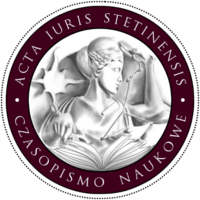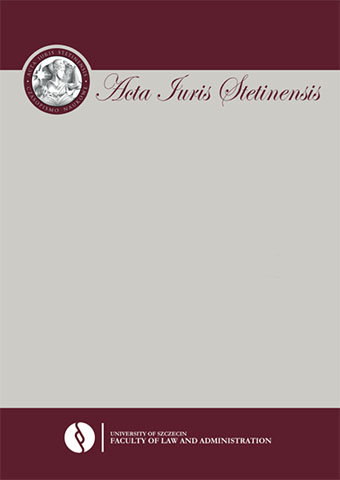Abstract
The term „scientific work” is the term used by the existing Act on copyright and related rights of February 4, 1994 (Law Journal of 2016, item 666 as amended) and it constitutes one among a number of types of works protected by copyright. The existing Copyright Act is not defining the meaning, of „scientific work”. The basic significance has therefore distinguishing scientific work from research in the meaning of
process leading to certain findings, based on using specific methodology leading to these findings and scientific findings themselves, as personal rights, constituting in the wide meaning of this word creativity (referred to in art. 23 of the Civil Code) of persons, whose this particular finding is coming from. The basic issue is the necessity to distinguish scientific work as an object of copyright protection, that is an intangible good of a specific characteristics, distinctiveness from specific tangible good, referred to by scientific work, which constitutes transcendental good in relation to the work. Also computer programs can be scientific works. Scientific works do not however encompass inventions, discoveries, researches and scientific projects. The qualification of a work as a scientific work does not justify the limitation to express the work in a certain form as for example literary work. A scientific work can be scientific article or scientific monograph, but also scheme expressed by visual means or photography created on the basis of scenario tending towards disclosing the essence or features of the occurance examined for a certain purpose. The most important is to distinguish the process the research is being conducted by, including its scenario and result, from scientific work, which constitutes the report about the certain occurance, its features or relations, in particular methodological assumptions or results fixed in any manner, subordinated to cognitive function, that is allowing to get acquitained with content and methodology being reported on, which resulted with formulating certain conclusions and meaning evaluated, paying special attention to certain elements. In the consequence, the author of the research and the author of the report thereof, does not necessarily have to be the same person. A separate issue is quite floating border line between artistic, scientific and popular science work. A work is always a relation, expression of individual vision of a certain issue, item, occurance, process, its features and dependences. Formal measures used in the work are only tools to express the projection of authors imagination. The distinguishing feature is the method of expressing of certain transcendental goods within the work, for the purpose of learning, subordinated to this purpose. The discriminant element of scientific work is, within its cognitive purpose, the method of conceptualization, disquisition and maintaining specific level of explicitness and precision in formulating judgments and their justifications. Scientific work is an object of copyright protection, where basing on the method of selection, presentation, expression of specified thesis and their substantations assumed by the author, an original projection of author’s vision as to the existance of specific occurances, goods, their features or reliances, transcendent in relation to the scientific work occures, regardless of means of expression, which have been used.






